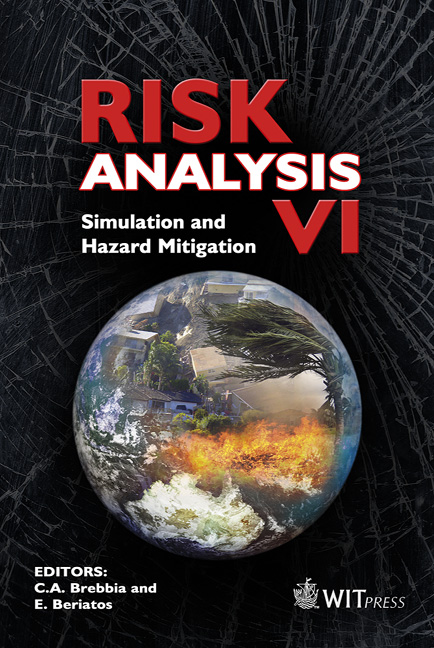Propagation Of Environmental Risk From Contaminant Transport Through Groundwater And Stream Networks
Price
Free (open access)
Volume
39
Pages
10
Page Range
55 - 64
Published
2008
Size
741 kb
Paper DOI
10.2495/RISK080061
Copyright
WIT Press
Author(s)
K. Persson, J. Jarsjö, C. Prieto & G. Destouni
Abstract
We use a Lagrangian stochastic advective-reactive (LaSAR) approach to model coupled groundwater and surface water contaminant transport. In this approach, physical (advective) solute travel time distributions constitute main functions for the contaminant transport representation. In a specific catchment area case study, we show how these travel time distributions, for separate groundwater and stream network systems and for the linked groundwater-stream systems of whole catchments, can be modelled and quantified from available field data. We further use the LaSAR modelling approach in an extreme-scenario methodology for investigating how the risk (probability) of concentrations exceeding given environmental or health-based concentration limits may propagate downstream of a contaminant source for various spatial source extents and contaminant release magnitudes and dynamics under different aquifer conditions. Results show that the average relation between characteristic advective transport and natural attenuation time scales is essential and in some (with results identifying also in which) cases sufficient information for assessing if and where this risk may decline below acceptable levels downstream of the source zone. The presented general quantification methodology and specific exemplification results may provide useful guidelines for emergency remediation of contaminated land sites and for prioritisation decisions and scoping calculations to focus further investigations of long-term remediation options on critical site and contaminant parameters. Keywords: contaminated land, solute transport, stochastic modelling, environmental risk analysis, GIS.
Keywords
contaminated land, solute transport, stochastic modelling,environmental risk analysis, GIS.





